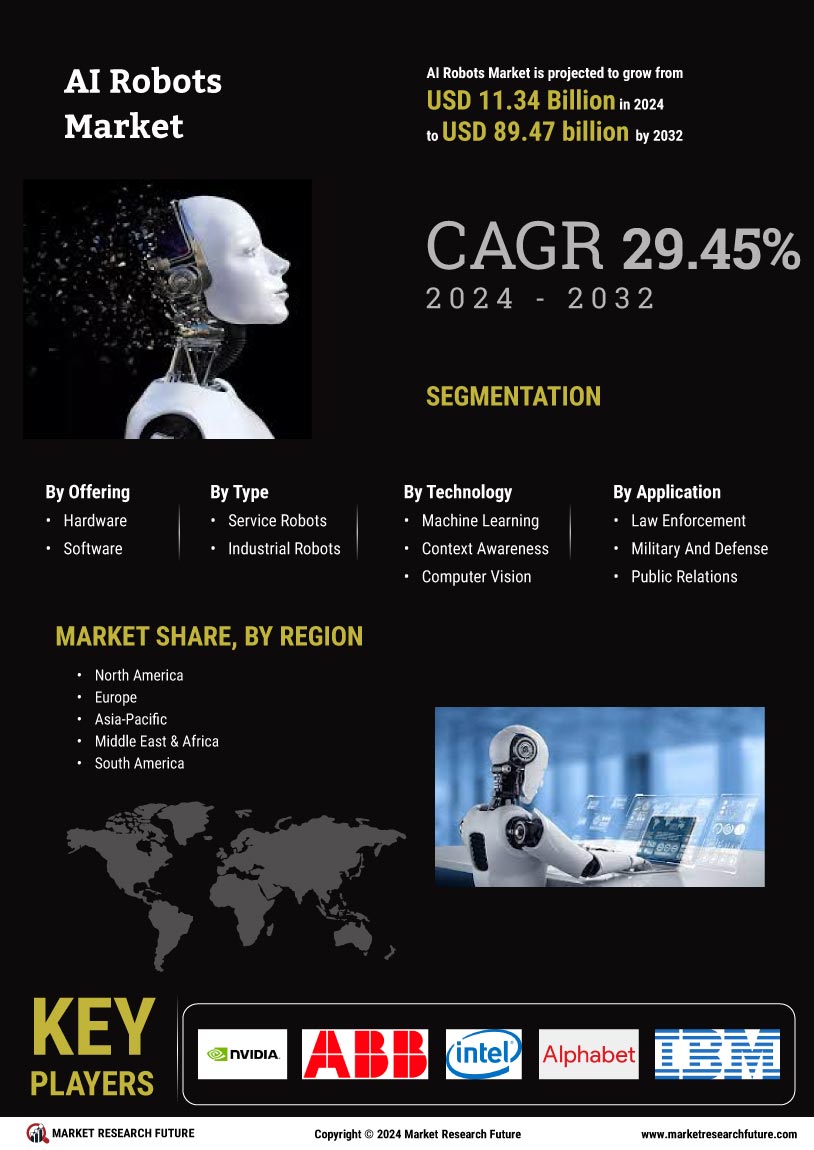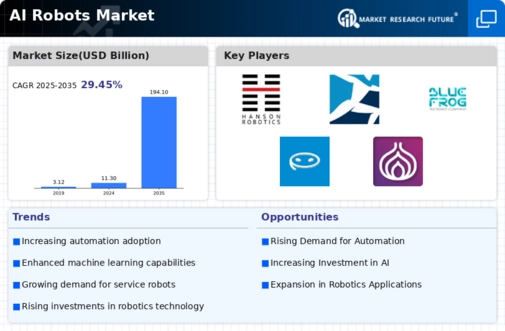Rising Labor Costs
The AI Robots Market is significantly influenced by the rising labor costs across various sectors. As wages continue to increase, businesses are compelled to seek cost-effective solutions to maintain profitability. The adoption of AI robots offers a viable alternative, allowing companies to automate repetitive tasks and reduce reliance on human labor. Reports suggest that industries such as manufacturing and logistics have seen a 15% increase in automation adoption due to these economic pressures. Consequently, the demand for AI robots is expected to rise, as organizations strive to optimize their operations and mitigate the impact of escalating labor expenses. This trend underscores the critical role of AI robots in enhancing operational efficiency and driving economic sustainability.
Growing Focus on Safety and Compliance
The AI Robots Market is increasingly shaped by the growing emphasis on safety and compliance within workplaces. As industries face stringent regulations and safety standards, the integration of AI robots presents a solution to mitigate risks associated with human labor. AI robots can perform hazardous tasks, reducing the likelihood of workplace accidents and ensuring compliance with safety protocols. For instance, sectors such as construction and manufacturing are adopting AI robots to enhance safety measures, with studies indicating a 20% reduction in workplace injuries. This focus on safety not only drives the demand for AI robots but also positions them as essential tools for organizations aiming to create safer work environments while adhering to regulatory requirements.
Technological Advancements in Robotics
The AI Robots Market is propelled by rapid technological advancements in robotics and artificial intelligence. Innovations in machine learning, computer vision, and sensor technologies are enhancing the capabilities of AI robots, enabling them to perform increasingly complex tasks. For example, advancements in AI algorithms have improved robots' ability to learn from their environments, leading to more efficient and adaptable systems. The market is projected to grow at a compound annual growth rate of 25% over the next five years, driven by these technological breakthroughs. As companies seek to leverage cutting-edge technologies, the demand for sophisticated AI robots is likely to escalate, further transforming the landscape of the AI Robots Market.
Increased Investment in AI Technologies
The AI Robots Market experiences a notable surge in investment as companies recognize the potential of artificial intelligence to enhance operational efficiency. In recent years, funding for AI startups has escalated, with estimates indicating that investments reached approximately 30 billion dollars in 2023. This influx of capital facilitates the development of advanced robotics solutions, enabling businesses to automate complex tasks and improve productivity. As organizations seek to remain competitive, the integration of AI technologies into robotic systems becomes increasingly essential. This trend not only drives innovation within the AI Robots Market but also encourages collaboration between tech firms and traditional industries, fostering a dynamic ecosystem that supports growth and development.
Expansion of E-commerce and Logistics Sectors
The AI Robots Market is significantly impacted by the expansion of e-commerce and logistics sectors. As online shopping continues to gain traction, companies are increasingly investing in automation to streamline their supply chains and enhance delivery efficiency. The integration of AI robots in warehousing and distribution centers has proven to optimize operations, with studies indicating a 30% increase in order fulfillment speed. This trend is expected to continue, as businesses strive to meet consumer demands for faster delivery times. Consequently, the AI Robots Market is likely to witness substantial growth, driven by the need for innovative solutions that address the challenges posed by the evolving e-commerce landscape.


















Leave a Comment